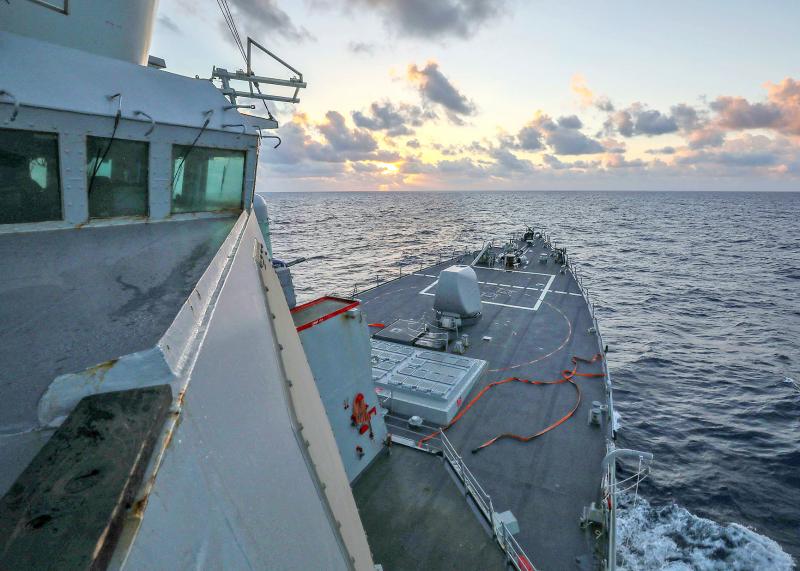Chinese forces followed and warned away a US warship that entered waters near the Paracel Islands (Xisha Islands, 西沙群島) in the South China Sea, China’s military said yesterday, in the latest uptick in tensions in the disputed waterway.
The Southern Theatre Command of the People’s Liberation Army said the USS Benfold “illegally” sailed into Chinese territorial waters without permission, infringing upon the country’s sovereignty, and that Chinese naval and air forces tracked the ship.
“We solemnly demand that the US side immediately stop such provocative actions, otherwise it will bear the serious consequences of unforeseen events,” it added.

Photo: Reuters
The US Navy rejected claim.
The Benfold was conducting what the navy called a freedom of navigation operation “in accordance with international law,” and “continued on to conduct normal operations in international waters,” 7th Fleet spokesman Mark Langford said in a statement.
The US frequently carries out “freedom of navigation” missions in the South China Sea to challenge Chinese territorial claims.
China has established military outposts on artificial islands in the waters, which include vital shipping lanes, and contain gas fields and rich fishing grounds.
The South China Sea has become one of many flashpoints in the testy relationship between China and the US, with Washington rejecting what it calls unlawful territorial claims by Beijing.
China claims vast swaths of the South China Sea. Taiwan, Vietnam, Malaysia, Brunei and the Philippines all have overlapping claims.

Drug lord Jose Adolfo Macias Villamar, alias “Fito,” was Ecuador’s most-wanted fugitive before his arrest on Wednesday, more than a year after he escaped prison from where he commanded the country’s leading criminal gang. The former taxi driver turned crime boss became the prime target of law enforcement early last year after escaping from a prison in the southwestern port of Guayaquil. Ecuadoran President Daniel Noboa’s government released “wanted” posters with images of his face and offered US$1 million for information leading to his capture. In a country plagued by crime, members of Fito’s gang, Los Choneros, have responded with violence, using car

Two former Chilean ministers are among four candidates competing this weekend for the presidential nomination of the left ahead of November elections dominated by rising levels of violent crime. More than 15 million voters are eligible to choose today between former minister of labor Jeannette Jara, former minister of the interior Carolina Toha and two members of parliament, Gonzalo Winter and Jaime Mulet, to represent the left against a resurgent right. The primary is open to members of the parties within Chilean President Gabriel Boric’s ruling left-wing coalition and other voters who are not affiliated with specific parties. A recent poll by the

TENSIONS HIGH: For more than half a year, students have organized protests around the country, while the Serbian presaident said they are part of a foreign plot About 140,000 protesters rallied in Belgrade, the largest turnout over the past few months, as student-led demonstrations mount pressure on the populist government to call early elections. The rally was one of the largest in more than half a year student-led actions, which began in November last year after the roof of a train station collapsed in the northern city of Novi Sad, killing 16 people — a tragedy widely blamed on entrenched corruption. On Saturday, a sea of protesters filled Belgrade’s largest square and poured into several surrounding streets. The independent protest monitor Archive of Public Gatherings estimated the

Irish-language rap group Kneecap on Saturday gave an impassioned performance for tens of thousands of fans at the Glastonbury Festival despite criticism by British politicians and a terror charge for one of the trio. Liam Og O hAnnaidh, who performs under the stage name Mo Chara, has been charged under the UK’s Terrorism Act with supporting a proscribed organization for allegedly waving a Hezbollah flag at a concert in London in November last year. The rapper, who was charged under the anglicized version of his name, Liam O’Hanna, is on unconditional bail before a further court hearing in August. “Glastonbury,